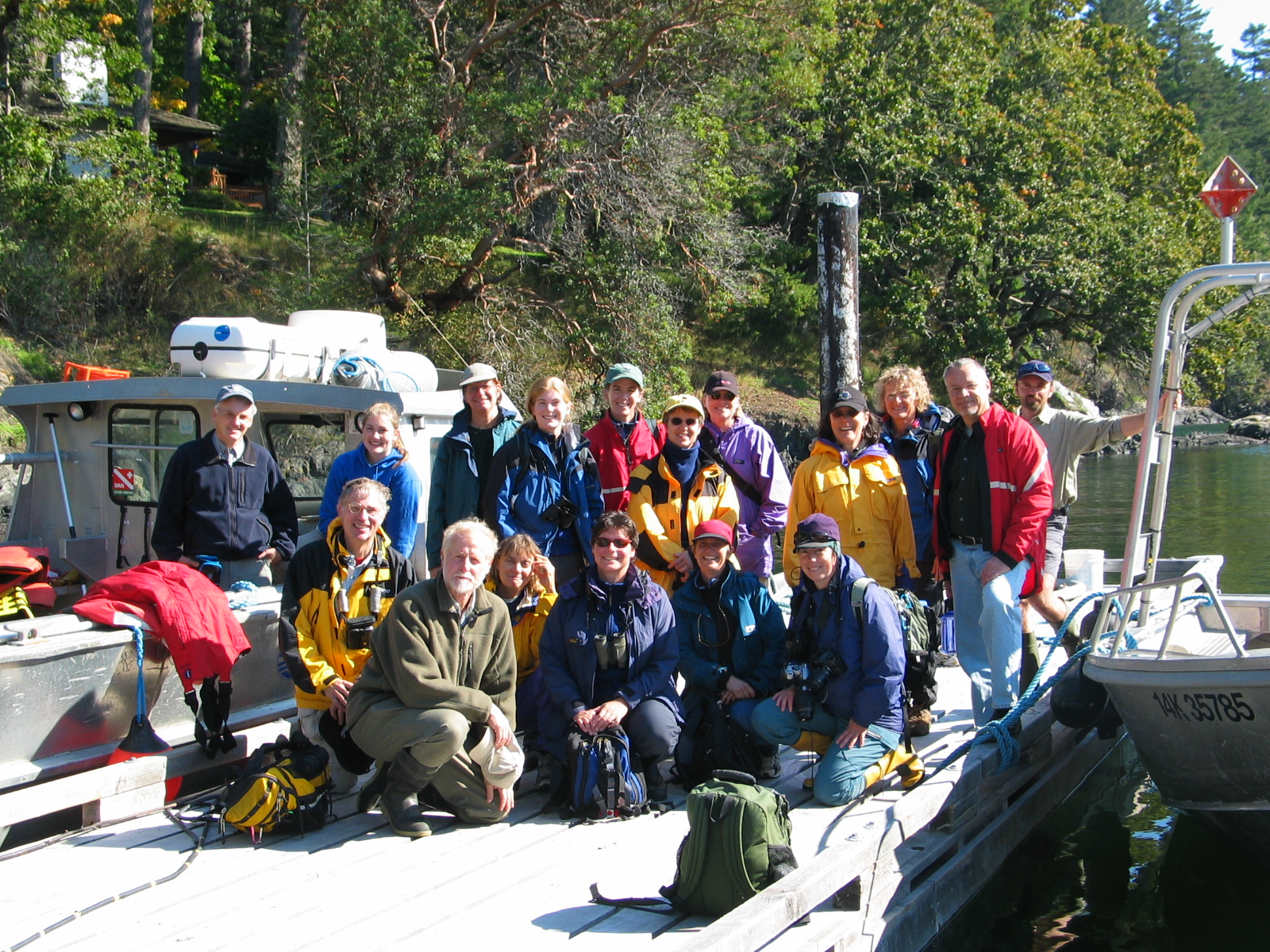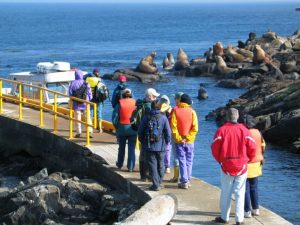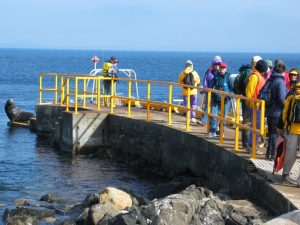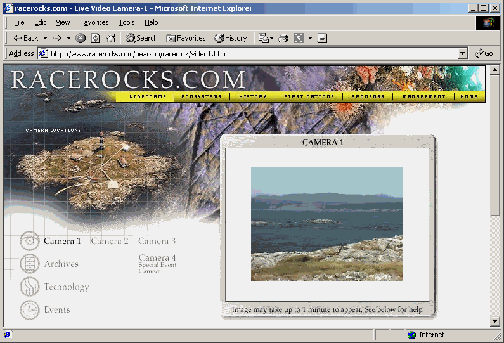Proposal and Rationale for all PC Students spending time at Race Rocks as part of their College experience.
By Ryan Murphy
A select few students have been given the opportunity over the past twenty-odd years to experience and take part in one of the region’s most prominent educational installations. And we are not talking about Pearson College. Race Rocks is an incredible resource, utilized by students from around the world via racerocks.com, yet since the end of orientation week tours to the archipelago, many of our own students graduate without having ever seen the islands.
It is this gross under-use of a “national jewel” that forms the basis for this proposal: an institutionalized system that would see every student at the College spend one week of their first year living and learning on Race Rocks.
Logistics:
There are 27 weeks of classes for students in their first year of study. As well, there are upwards of 104 first year students in any given year. Four students per week for 26 weeks covers the first year student body, as well as being a typical occupant load for the assistant keeper’s residence on the island. Any combination of first year students could be tried: two pairs of roommates, all males, all females, planned groups, interest groups, etc. The important thing is the provision of this unique opportunity to all students, not just the few divers, environmental systems, and racerocks.com activity students. This initiative is doable, and should not be a matter of if, but when.
Rationale:
This proposal fits with the aims of the College in numerous ways. The overlying goal of the UWC movement, as first enounced by Kurt Hahn is “to provide an education, in the total sense, which will produce involved, active, educated citizens…” Having seen many of the students who’ve spent even a weekend here, and having spent upwards of three months here myself, I know that living at Race is not only just different from living at the College, but beneficial for this difference.
These benefits are many:
-
students learn organizational skills as they plan meals and budget food stores,
-
they learn responsibility through the daily chores that structure one’s stay on the island,
-
they develop leadership skills by handling the various challenges that isolated island life present as well as,
-
interpersonal skills while handling the various challenges that isolated, and secluded island life present,
-
Race Rocks is an inspirational place in many ways, a wonderful location to encourage creative expression,
-
being a Marine Protected Area, Guardians learn profound respect for the environment,
-
for many students, the change of location and open space can be mood elevating, particularly effective in months containing the letter “r”.
Responding to the unique physical and emotional challenges of the Race Rocks environment while attending the College can only foster growth and positive development in our students.
It is believed that having a College-wide participation in this program will not only benefit our students but the College as a whole:
-
with proper planning and effective use of the technology already available to us, students can not only keep up with their school work, but contribute to their classes as well,
-
nowhere on campus other than Race Rocks can students experience the raw forces of nature. This increased awareness aids not only science courses, but more creative ones as well, not to mention many activities.
-
Student groups on the island can be assigned or create their own themes or subjects for discussion during their week, akin to the activities during Jack Matthews’ Days. These discussions can take place online, and a summary could be provided to The Link to eventually create an impressive library of topics.
.
Returning now to The Core, this project responds in many efficient and eloquent ways:
-
Sleep. In September, the matter of sleep will have completed its third decade of being an ongoing problem at the College. When the sunsets at Race Rocks, there is nothing to do. The computers will allow students to keep in touch, but all students who stay on the island get more than enough sleep.
-
Physical Exercise. Though it is a small island, the climb to the tower is often enough to wind most people. Physical chores have the same benefits as most Village Service activities and are more exercise than many students would normally get.
-
Time for Reflection. See point 1, Race Rocks is sufficiently devoid of distractions to provide plenty of time for reflection.
-
Service. This program can easily be incorporated into a student’s requirements of service to the College.
-
Conflict Resolution. As stated above, interpersonal skills will be tried and tested during the week, cementing some relationships, and encouraging growth for others.
-
Aesthetic Appreciation. Any student inclined to pursue an artistic endeavor would meet with success at Race Rocks.
-
Environmental and Political Awareness. As previously discussed, Race Rocks is perfectly situated to increase awareness on both these fronts.
In conclusion, I would like to reemphasize that Pearson College is not using Race Rocks to its full potential. Both the students and the College as a whole are missing out because of this waste, and it is the goal of this proposal to first make you aware of this potential, and to secondly encourage your own thoughts for the development of this new initiative.
Prepared for Chris Blondeau, July 9, 2003.
by Ryan Murphy (Year 26).
Race Rocks Pre-packaged Tours: 2003
by Ryan Murphy
Adolescents:
Think young, easily bored, but impressionable and inexperienced.
Will want photos of themselves and maybe MPA.
General:
– Safety talk and general information at the docks before getting way.
– Get them involved and thinking early, find out group’s interest(s) and play off that.
– Encourage questions, cater tour to these.
– Orientation stop near Bentinck, get them to point out (guess) local features and places.
– Watch for Bull kelp on way out for demonstration.
MPA tour:
Route dictated by weather and sea conditions.
– Welcome to Canada’s “first” MPA.
– Discuss recent history and management.
– Get them to look around, ask them what they think makes this place distinct/different.
– Point out local flora and fauna, their importance in past and today.
– If there are sea lions, point out differences between them, and with seals.
– Make First Nations link here as boat gets closer to Great Race.
– Discuss LBPC’s role in making/keeping Race Rocks such an important place.
– Point out school-based activities done on the island.
– Get them to smile and wave as they pass in front of the cameras.
– Discuss the internet’s role in preserving the MPA while giving even greater access.
– Talk about diving and other ways students at LBPC get involved.
Miscellaneous:
– If they’re whale crazy, or whales just happen to stop by, identification of two types of orcas, discussion on whale/watcher interactions, other problems encountered by the whales, make link with farmed salmon (poison).
– If the MPA is devoid of everything except the elephant seal, shift focus towards him, story of boat props, and the importance of protecting Race Rocks.
– If they’re a little too excited, the Boxing Day drownings, and Johan Ashuvud stories might help reshift their focus.
– If they’re bored, stories of shipwrecks and sunken treasure might get their attention as well.
Little Kids:
Think very young, easily distracted, mostly uninterested, but easily impressed with simple things. May fall asleep or start to cry.
General:
– Emphasize safety on the boat, warm clothes, and exciting possibilities. The majority of the experience will be new for them, so take time to make interesting and fun as much as you can.
– Get them involved and thinking early, keep it simple and fun
– Encourage conversation and interaction, keep them involved.
– Orientation stop near Bentinck, keep it simple, make leprosy fun.
– Watch for Bull kelp on way out for demonstration.
MPA tour:
Route dictated by weather and sea conditions.
– Welcome to the first protected place of its kind in Canada.
– Get them to look around, point out some features that make this place distinct/different.
– Point out local animals, tell the kids why they’re there and what they do.
– If there are sea lions, point out differences between them, and with seals. Everyone can try animal sounds.
– Mention First Nation’s connection with the past and future of the islands.
– Point out school-based activities done on the island.
– Get them to smile and wave as they pass in front of the cameras.
– Tell kids that they can watch the sea lions at home with their parents at rr.com.
– Talk about going under the water, and how beautiful and colourful it is there.
Miscellaneous:
– If they’re whale crazy, or whales just happen to stop by, identification of two types of orcas, simple discussion of current issues.
– If the MPA is devoid of everything except the elephant seal, shift focus towards him, story of boat props, and the importance of protecting Race Rocks.
– Make the connection of visiting the animals and having a herd of buffalo visit your living room.
– Keep adults involved, if the kids are too young or too uninterested, give the adults their tour, and hit on some exciting things for the kids every so often.
Adults:
Think future donor or concerned private citizen
General:
– Safety talk and general information at the docks before getting way.
– Get them talking early, find out group’s interest(s) and play off that.
– Encourage questions, cater tour to these.
– Orientation stop near Bentinck, indicate local features and places.
MPA tour:
Route dictated by weather and sea conditions.
– Welcome to Canada’s “first” MPA.
– Discuss recent history and management.
– Describe what features make Race Rocks so incredible.
– Point out local flora and fauna.
– If there are sea lions, point out differences between them, and with seals.
– Make First Nations link here as boat gets closer to Great Race.
– Discuss LBPC’s role in making/keeping Race Rocks such an important place.
– Point out college activities done on the island, Mike and Carol’s role.
– Get them to smile and wave as they pass in front of the cameras.
– Discuss the internet’s role in preserving the MPA while giving even greater access.
– Talk about funding issues, the partnerships created, and how important outside involvement is.
Miscellaneous:
– If they’re whale crazy, or whales just happen to stop by, identification of two types of orcas, discussion on whale/watcher interactions, other problems encountered by the whales, make link with farmed salmon (poison).
– If the MPA is devoid of everything except the elephant seal, shift focus towards him, story of boat props, and the importance of protecting Race Rocks.
– Relating the Johan Ashuvud story will help emphasize the importance Race Rocks has.
– Many adults are concerned with who has access to the islands, the particulars of management and the like. Knowing the operating budget helps.
First Nations:
Be conscious of current issues, as well as information they may have
General:
– Safety talk and general information at the docks before getting way.
– Get them talking early, find out group’s interest(s) and play off that.
– Encourage questions, cater tour to these.
– Orientation stop near Bentinck, indicate local features and places.
MPA tour:
Route dictated by weather and sea conditions.
– Welcome to Canada’s “first” MPA.
– Know which month of the Salish calendar you’re in.
– Xwayen used by the Saanich people (Coast Salish), speak Klallum language.
– Discuss recent history and management (milk-stool).
– Describe what features make Race Rocks so incredible.
– Feel the crowd for any traditional knowledge, encourage stories.
– Point out local flora and fauna of importance, traditional uses.
– Make First Nations link here as boat gets closer to Great Race.
– Earle Claxton of the Tsawout First Nation and Joe Bartleman of the Tsartlip First Nation.
– Discuss LBPC’s role in making/keeping Race Rocks such an important place.
– Point out college activities done on the island, Mike and Carol’s role.
– Indicate the cameras as you pass in front of the windows.
– Discuss the internet’s role in preserving the MPA while giving even greater access.
– Talk about funding issues, the partnerships created, and how important outside involvement is.
Miscellaneous:
– If they’re whale crazy, or whales just happen to stop by, identification of two types of orcas, discussion on whale/watcher interactions, other problems encountered by the whales, make link with farmed salmon (poison).
– If the MPA is devoid of everything except the elephant seal, shift focus towards him, story of boat props, and the importance of protecting Race Rocks.
– Relating the Johan Ashuvud story will help emphasize the importance Race Rocks has.
– Many people are concerned with who has access to the islands, the particulars of management and the like. Knowing the operating budget helps.
Fund Raising:
Think future donor, the most diverse group. Some come to show off gadgets, others want to see the lighthouse, and still others don’t even know they want to support us yet.
General:
– Safety talk and general information at the docks before getting way.
– Get them talking early, find out group’s focus and build on that.
– Encourage questions, cater tour to these.
– Orientation stop near Bentinck, if there are signs of genuine interest. If not, casually pointing things out should suffice.
MPA tour:
Route dictated by weather and sea conditions.
– Welcome to Canada’s “first” MPA.
– Discuss recent history and management.
– Describe what features make Race Rocks so incredible.
– Point out local flora and fauna.
– Make First Nations link here as boat gets closer to Great Race.
– Discuss LBPC’s role in making/keeping Race Rocks such an important place.
– Point out college activities done on the island, Mike and Carol’s role.
– Point to the cameras as you go by, discuss the many contributions already made.
– Discuss the internet’s role in preserving the MPA while giving even greater access.
– Talk about funding issues, the partnerships already created, and how important outside involvement is.
– Stress negative human impact, and importance of our mission to share and protect.
– How incredible the racerocks.com project is, world-class educational resource.
Miscellaneous:
– If they’re whale crazy, or whales just happen to stop by, identification of two types of orcas, discussion on whale/watcher interactions, other problems encountered by the whales, make link with farmed salmon (poison).
– If the MPA is devoid of everything except the elephant seal, shift focus towards him, story of boat props, and the importance of protecting Race Rocks.
– Relating the Johan Ashuvud story will help emphasize the importance Race Rocks has.
– Many adults are concerned with who has access to the islands, the particulars of management and the like. Knowing the operating budget helps.
– Jordanian student who completed university course with our site alone.
Information:
General:
Users:
Coast Guard, LBPC, Whale Watchers/Eco-tourists, Private citizens, Academics, Educators, First Nations.
Management:
DFO (Federal), BC Parks (Provincial), and LBPC (us).
Operating budget $150,000 a year. Relies heavily on private donors like you. What you see is made possible by many generous sponsors contributing time, money, and expertise.
Sponsors:
Apple Computers. ALI, LBPC, SONY, Friends of Ecological Reserves, Millennium Foundation, Richard Ivey Foundation, Johan Ashuvud Fund, Ken Dunham, Giovanni Rosso, Jochen Kumm…
Stories to know:
Boxing Day drownings, Sunken treasure, shipwrecks, L-51 death -> farmed salmon, toxins, elephant seal struck/healed, whale/watcher interactions, Johan Ashuvud, Bull Kelp, Jordanian student completing course online…
Website to know:
Why we have one, How we do it, and What is on it.
First Nations:
Late April- Early May Penawen (Harvest Seaweed)
May Centeki (Sockeye Return to Earth)
June-July Cenhenen (Pink Salmon/Humpback Return to Earth)
August Centawen (Coho Return to Earth)
Xwayen used by the Saanich people (Coast Salish), speak Klallum language.
Earle Claxton of the Tsawout and Jow Bartleman of the Tsartlip First Nation are elders who are involved with the MPA.
Used: Rockfish, Dungeness Crab, Sea Urchins, Sea cucumber, Gooseneck Barnacnles, Mussels, Abalone, Oysters, Bird’s Eggs, and various marine algaes.
Flora and Fauna:
Birds:
Herring Gull (common), Western Gull (seasonally), Bonaparte’s Gull (seasonally), Heermann’s Gull (seasonally), Glacous-winged Gull (v. common, breeder), Arctic Tern (rare, breeder), Black Turnstone (common), Short-billed dowitcher (common), Rock sandpiper (common), Black Oystercatcher (v. common, breeder), Bald Eagle (v. common), Harlequin Duck (seasonal), Rhinocerous Auklet (seasonally), Pigeon Guillemont (v. common, breeder), Common Murre (seasonally), Pelagic Cormorant (seasonally), Double-Crested Cormorant (common), Brandt’s Cormorant (seasonally, endangered).
Mammals:
Grey whale (rare), Humpback whale (v. rare), Orca (seasonal, transient rare), Dall’s Porpoise (rare), Harbour Porpoise (rare, in area), Northern Elephant seal (v. common), Northern Fur Seal (v. rare), California sea lion (common, seasonal), Steller/Northern sea lion (common, seasonal), Pacific Harbour Seal (v. common, breeder).
Others:
Bull kelp, giant pacific octopus, wolf eel, abalone, salmon.
Pests: River otters, Canada geese, Crows, Grackles.
History:
1860 lighthouse constructed with Scottish granite (ballast) and local rock,
Same paint as space shuttle,
20W light bulb, solar powered (automated), Fresnel lens,
Most southerly point of Canada west of Ontario,
3 days before the tower was lit, Nanette (tallship) struck, total loss,
1865 Boxing Day drownings of family and friends of keepers,
1867 SS Nichola Biddle sank
1877 Swordfish ran aground
1882 SS Rosedale lost
1886 Barnard Castle struck
1896 SS Tees lost
1901 Prince Victor sank
1911 Sechelt capsized in Race Passage
1923 Siberian Prince lost (didn’t hear foghorn)
1925 Eemdijk lost (didn’t hear foghorn)
1925 Hope (tug) lost trying to salvage Eemdijk.
1929 Hydrographic Survey ship the Lilloet finds silent zone due to positioning of foghorn.
1885 Argyle (keeper) dives for gold sovereigns.
1950 Arthur Anderson lost as sea, skiff found near Port Angeles.
1997 Coast Guard hands management over to Pearson College
1998 Pilot MPA
2000 announced as MPA
2000 racerocks.com starts with live cameras broadcasting over the internet.
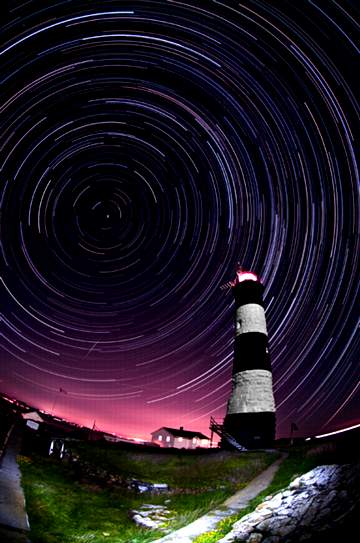 The British Colonist July 18,1859: ” The Imperial Treasury had advanced 7000 lbs to construct two lighthouses, a large one on Race Rocks : a smaller one on Fishguard (sic) Island, mouth of Esquimalt Harbor. Half the sum to be paid by British Columbia and Vancouver’s Island: the other half to be borne by the Imperial Government.”
The British Colonist July 18,1859: ” The Imperial Treasury had advanced 7000 lbs to construct two lighthouses, a large one on Race Rocks : a smaller one on Fishguard (sic) Island, mouth of Esquimalt Harbor. Half the sum to be paid by British Columbia and Vancouver’s Island: the other half to be borne by the Imperial Government.”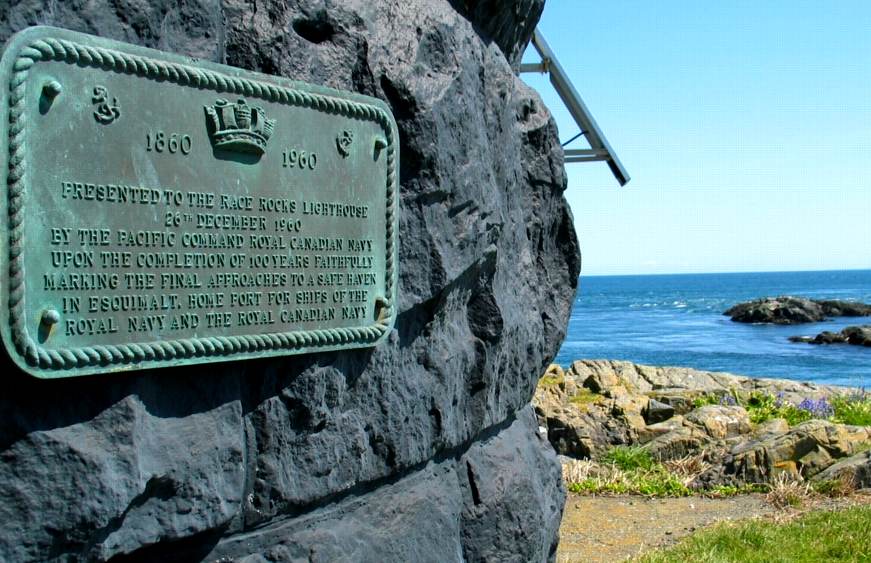 This file has many aspects of the history of the light station.
This file has many aspects of the history of the light station.
